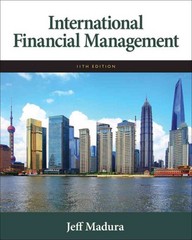Answered step by step
Verified Expert Solution
Question
1 Approved Answer
please answer all of the questions that are still blank. thanks options for blank 1: gain and decline options for blank 2: increase and decrease
please answer all of the questions that are still blank. thanks




options for blank 1: "gain" and "decline" options for blank 2: "increase" and "decrease"
2. Bonds and their valuation - Part 2 Bond valuations and yields: What do they mean, and how do you dartve their values? Consider the following case of investment-grade bonds issued by Procter & Gamble Co. (PSG) in August 2011 Procter & Gamble (NYSE: PGI Issue Details Callable Issue Size (SMI) $1,000 Coupon Maturity Date 08/15/2014 Coupon Type Yes Coupon Frequency Semi-annually 0.700% Fixed Historical Treasury Rates 2 Year Nominal 5 Year Nominal Difference 1.0 Rate (%) un mor M 0.19 NOV Dec July 2011 Aug Sept Jan 2012 Time Period Source: U.S. Department of Treasury, cited on Morningstar.com, http://quicktake morningstar.com/Stock Net/bonds.aspx?Symbol PG&Country=US Proctor and Gamble's total amount of debt increased from 31.9% in March 2011 to 34.2% in December 2011, mainly due to its net debt issuances to fund general corporate purposes. What was the annual cost of the funds raised from the $1.0 billion bonds that mature in 2014 to P&G? 70.00 basis points If the bond sold at $100.10 at the time of issue, investors' required annual yield would be 0.67% Looking at the comparable U.S. Treasury yield, these bonds were issued at a spread of 51.00 basis points. Because the coupon rate is greater than the yield required by the market, the bond sold at premium at the time of issue. Ir the new observed yield of the bond is 1.8%, the bond is likely to be trading at a price of places.) (Note: Round your answer to two decimal If the current yield is higher than the coupon rate, investors would want a higher return on their investment in the coupon rate is less than the yield required by the market, the price of the bond is most likely to be Mil the par value of the bond, and the bond will sell at As interest rates increase, the yield required by the market will increase, and the price of the bond is likely to increases to 1.8%, the bond's price y by 7. (Note: Round your answer to two decimal places.) Thus, when the yield Understanding yield to call and when bonds are called Understanding yield to call and when bonds are called Suppose the bond had a call structure that allowed the company to call its bonds after one year. The coll structure of the bonds states that the bonds would be cellable at par. What would be the yield to call? O 3.290% 4.013% O 2.349% 1.800% In what situation would the company call the bond? 0 When interest rates fall When interest rates rise When current yield on the bonds falls When the bond's price rises From an investor's perspective, if the investor holas these P&G bands in their portfolio and market interest rates rise, the bands' value in the fixed- income asset class in the portfolio will most likely but if market interest rates all the value of bonds in the portfolio willStep by Step Solution
There are 3 Steps involved in it
Step: 1

Get Instant Access to Expert-Tailored Solutions
See step-by-step solutions with expert insights and AI powered tools for academic success
Step: 2

Step: 3

Ace Your Homework with AI
Get the answers you need in no time with our AI-driven, step-by-step assistance
Get Started


